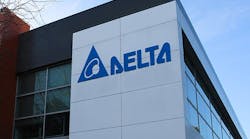Few people would disagree that today’s society is hyper-focused on technology. The continuous evolution of mobile devices and the introduction of higher resolution mobile phone cameras with higher processing power has helped foster a consumer market accustomed to purchasing a new mobile device every two years.
The security industry is no different. Surveillance cameras are continuously evolving to offer higher megapixel resolution, with some cameras on the market today offering resolutions of 20 megapixels, a feat thought impossible only a few years ago. This type of technological leap has driven demand with systems integrators and end users who are eager to deploy the latest and greatest technology, in the hopes of getting the best quality video image coupled with several weeks of video storage time.
The impact of higher megapixels
However, each increase in megapixel resolution, or the addition of individual surveillance cameras onto a system directly impacts the network design and configuration and immediately influences the system’s recording and storage capabilities. This affects how many days you can keep recorded video, available bandwidth and the speed at which data can be written onto a disk.
Because of this, security professionals need to keep a few things in mind when designing a surveillance system that involves megapixel cameras and requires multiple days of video storage.
First, it’s important to weigh the benefits of a higher megapixel camera over the requirements for the server and storage system. A system designed with megapixel cameras can provide the benefits of a surveillance project with fewer cameras overall, because one camera, in some cases, can now do the work of two. The consequences on the storage and server side, however, are also important considerations. As the result of adding higher megapixel technology, the storage solution deployed might not be adequate, requiring more hard disk space, which can dramatically drive up the overall cost of the system.
In addition the number of cameras attached to a server is impacted. Servers are rated at the maximum bandwidth (data rate) that can be managed. The higher the megapixel, the higher the bandwidth, the fewer cameras that can be connected to a single server thus increasing the number of recorders required. Selecting a recorder with a higher bandwidth capability provides the ability for growth with future megapixel cameras.
Second, don’t forget to define the result you are trying to achieve with a higher megapixel camera. It is easy to get caught up in all the excitement surrounding the better picture quality of a higher megapixel camera. If the original project specifications require only a two megapixel camera and you are now exploring a five megapixel camera, make sure you fully evaluate the reasons you are moving to a higher megapixel camera and weigh the benefits over the cost of the entire system.
An appealing functionality of megapixel cameras is the ability to dynamically allocate the bandwidth in the field of view. Cameras can be set with face detection (not facial recognition—just recognizing it’s a face in the camera field of view) and allocate more bandwidth/resolution to the face area than the walls or the sky. This can help maintain a lower bandwidth out of the camera without compromising on the ability to identify a face.
As a security installer it’s important to remember to do your math before you implement a megapixel camera system. A good, general rule of thumb is the more megapixel cameras you implement for a customer, the greater the impact it will have on that customer’s storage recording capabilities and cost.



